Originating in Sichuan, Twice-Cooked Pork became one of the most popular Chinese dishes in Japan. This recipe for the Japanese version has bell peppers and is less spicy. It‘s a flavorful stir-fry dish that‘s super easy and quick to make at home!
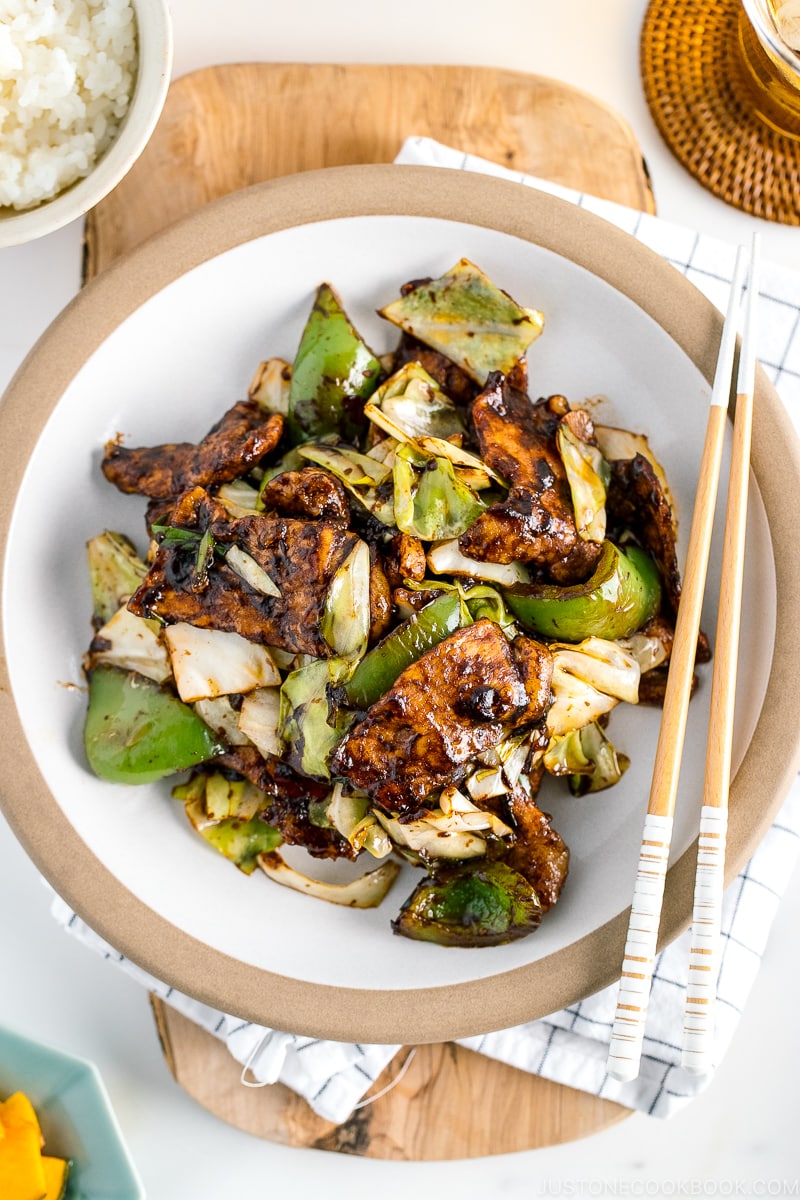
Japan offers many Chinese influenced foods, which often refer to as Chuka Ryori (中華料理). We’ve discussed more on this topic in this post if you wish to learn more about the history and background of Chuka Ryori.
Today, we’ll go straight to a famous Chuka Ryori dish – Hoi Ko Ro (ホイコーロー; 回鍋肉), or universally known as Twice Cooked Pork. You might have tried it at your favorite Chinese restaurants. This recipe is slightly different as it has been adapted to suit the Japanese palate. Nevertheless, you still get a hot plate of tender, caramelized pork that is bursting with astounding flavors!
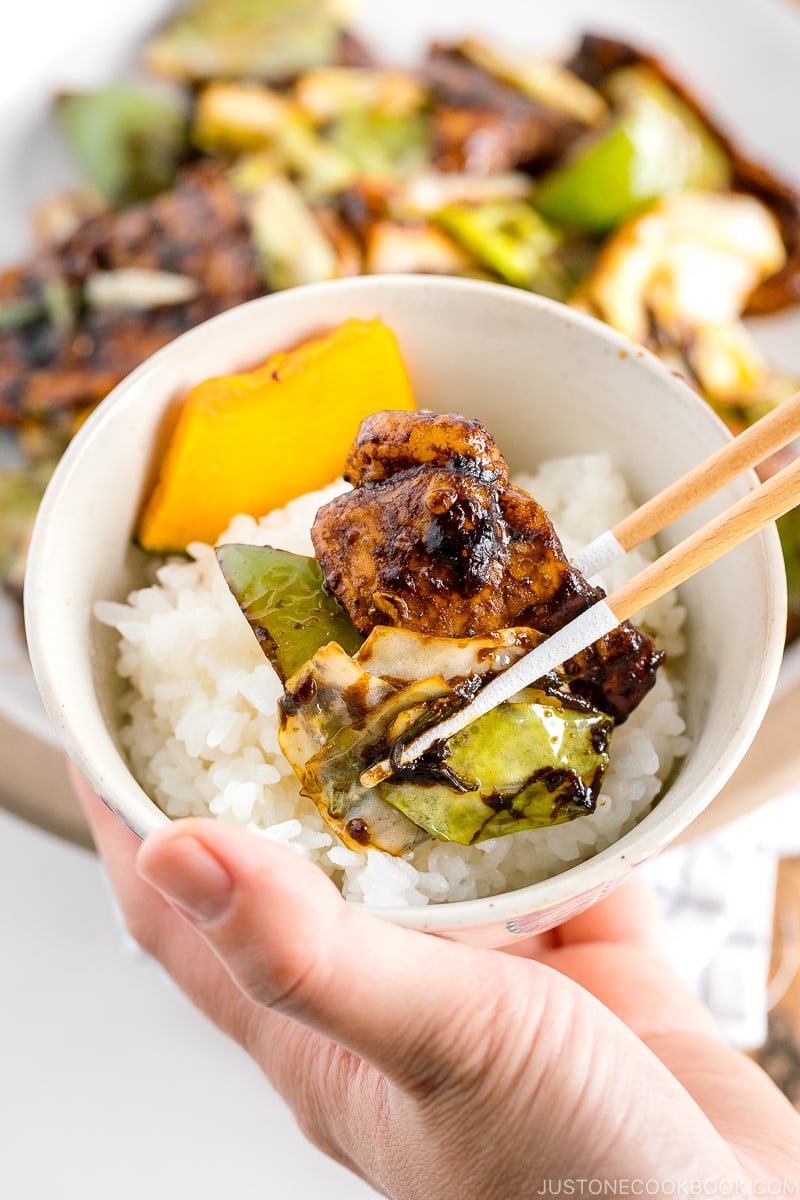
What is Twice Cooked Pork?
Twice Cooked Pork, or hui guo rou (回鍋肉), is a Sichuan dish of spicy pork belly. The name ‘twice-cooked’ comes from the cooking method that requires boiling the fatty pork first and then stir fry in the wok. The goal is to cook through the fat part without overcooking the lean part.
Somehow that got lost in translation in Japan. Instead of cooking the pork twice as reflected in the Chinese name “回鍋肉”, we use thinly sliced pork belly or loin and leave out the simmering/boiling process entirely. So it’s become a quick flash in the wok stir fry kind of dish.
How is the Japanese Twice Cooked Pork different from the Sichuan-counterpart?
- One-step cooking process – There is no simmering in exotic aromatics required. With thinly sliced pork, you just need to stir fry the dish, so it’s a lot quicker and easier than the Sichuan method. Not ‘twice-cooked’ per se, but similar in flavors and character.
- Always with green bell pepper – That’s the first difference Mr. JOC noticed when I was preparing the dish.
- Not spicy at all – We skip the chili peppers entirely! Even though the origin of the dishes is supposedly spicy, the Japanese renditions tend to deviate from that. You’ll find the younger generation in Japan is more open to spicy food due to wider exposure to international foods.
- Lack of some authentic ingredients – The authentic Chinese Twice Cooked Pork includes fermented black beans called Douchi (豆豉). Even well-seasoned Japanese home cooks are equipped with only Doubanjiang and Tienmianjiang along with the oyster sauce. Fermented black beans are not yet a common condiment in Japan.
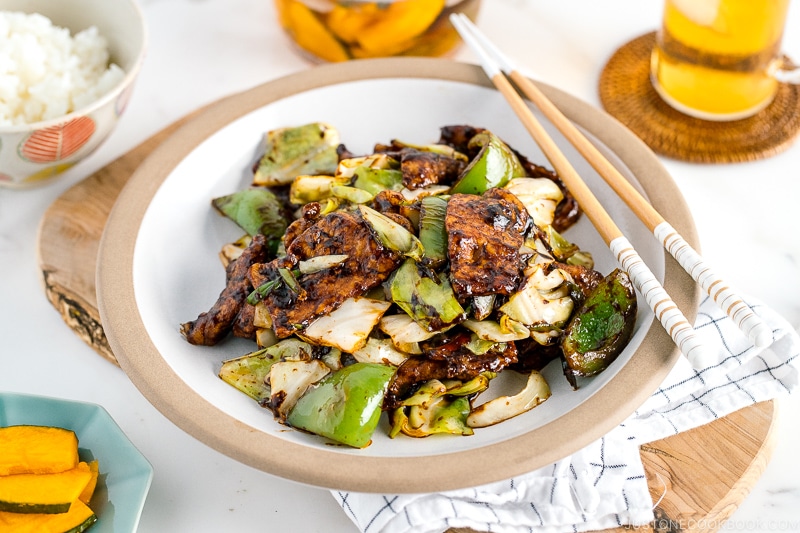
Japanese-Chinese Cuisine in Japan
Japanese-Chinese cuisine, which we call Chuka Ryori (中華料理), has its roots in Chinese cuisine but has evolved over time to suit the Japanese taste and appetite. It can be said that Chuka Ryori is its own category (more on that in this post).
For example, when you search Twice Cooked Pork (ホイコーロー) in Japanese, you will notice the dish is mostly brown with no hint of red chili color compared to the authentic 回鍋肉. Yet, Twice Cooked Pork is so popular in Japan that we even have a ready-to-go Chinese sauce made by Cook-Do.
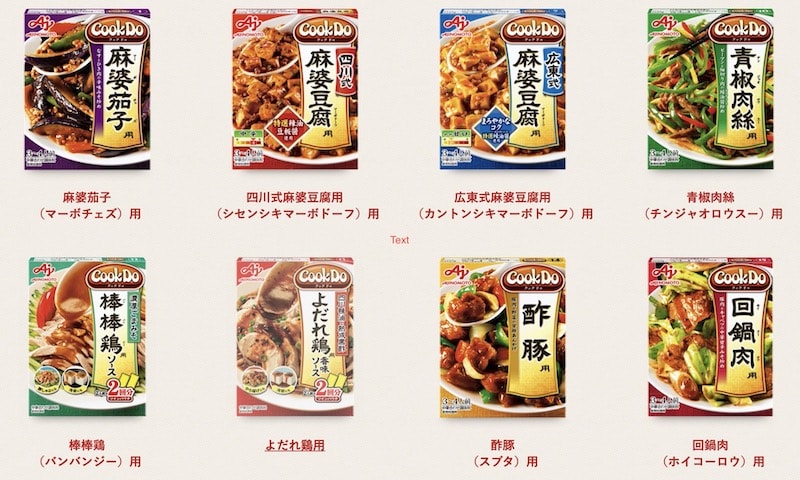
The vacuum-packaged Chinese sauces above showcase all the favorites, which include Mapo Tofu, Mapo Nasu, Chinjao Rosu, Sweet & Sour Sauce, and Twice Cooked Pork. Many housewives love these ready-made sauces because they are so convenient. You can just grab a package from the grocery store or convenience store, then stir fry the ingredients with the sauce for a quick dinner!
Ingredients You’ll Need
- Thinly sliced pork – You can use pork belly or pork loin in this recipe. I used my favorite kurobuta pork loin from a local Japanese market (Suruki). This pork loin is so tender and does not become tough even after stir-frying! You can find thinly sliced pork belly and pork loin in Japanese, Korean, or Chinese grocery stores.
- Cabbage – Regular green cabbage. Use the outer layer for its nice bright green color.
- Green bell pepper – The addition is what makes it Japanese, but it can be optional.
- Aromatics – Green onions and garlic.
- Seasonings – You’ll need doubanjiang (spicy chili bean sauce/broad bean paste), tienmienjiang (sweet bean sauce), sake, soy sauce, sugar, and white pepper. We’ll also need potato starch (cornstarch) to dust on the pork.
If you make my Japanese Chinese dishes (Chuka Ryori) such as Miso Ramen, Mapo Tofu, Mapo Eggplant, and Black Sesame Dan Dan Noodles, you should have all the ingredients. For tienmienjiang, as I don’t use it often in my recipes, I added a substitute in the recipe note.
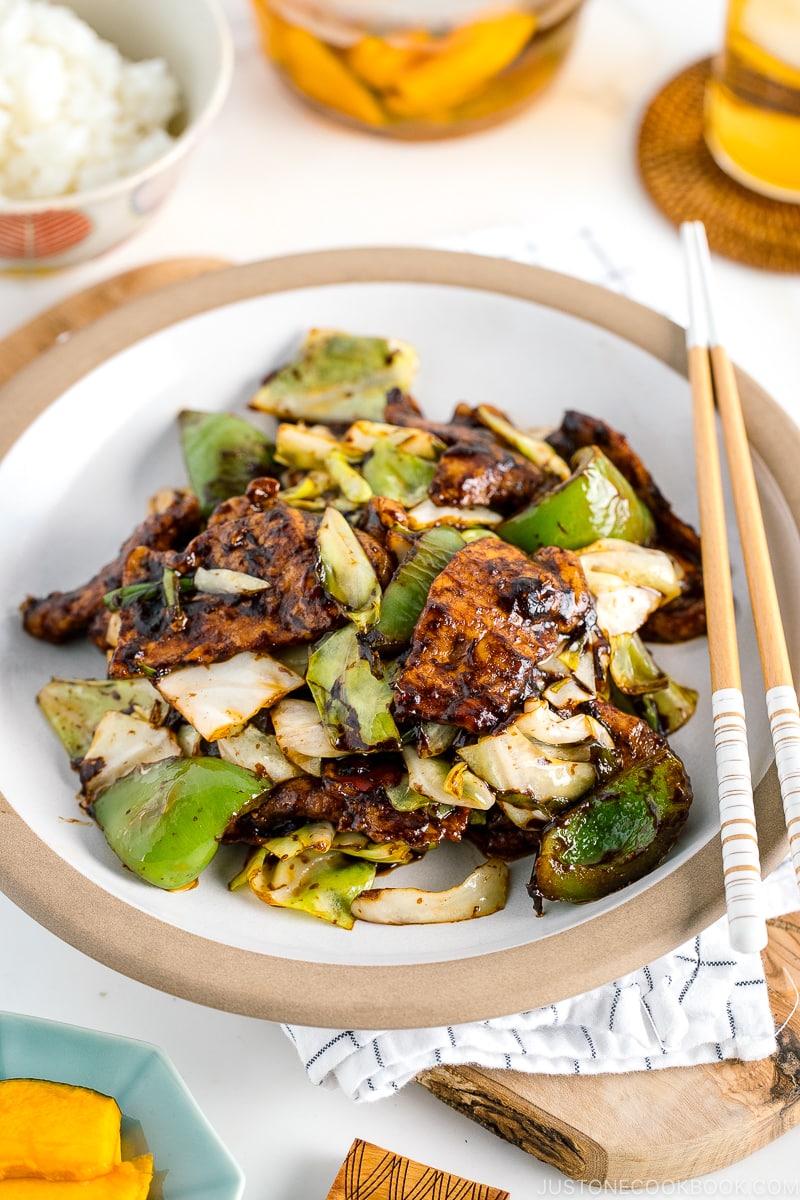
3 Quick Tips on Making Twice Cooked Pork
- Use a big frying pan (I love this carbon steel pan that became non-stick after seasoning) or a wok (I use this one) that gives more surface for searing the pork.
- Stir-frying is fast; make sure to pre-mix the sauce ingredients, chop all the veggies and season all the meat, and put everything by the stove before you start! Once the ingredients hit the hot wok, you should be ready to rock and roll.
- Cook the vegetables ahead of time to ensure they are not under or overcooked.
I hope you enjoy this scrumptious stir fry dish. The rich and savory sauce will make you come back for more, so bring on the appetite!
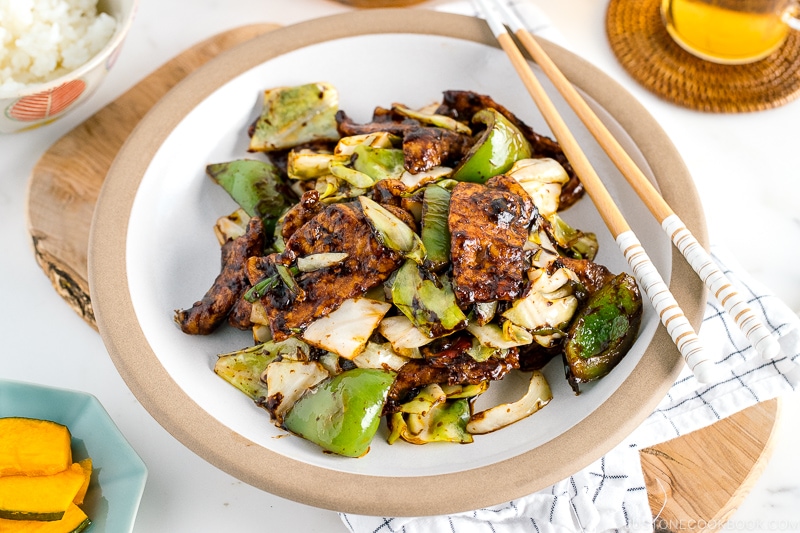
Wish to learn more about Japanese cooking? Sign up for our free newsletter to receive cooking tips & recipe updates! And stay in touch with me on Facebook, Pinterest, YouTube, and Instagram.

Twice Cooked Pork (Hoi Ko Ro)
Ingredients
For the Pork
- 10 oz thinly sliced pork loin
- ¼ tsp Diamond Crystal kosher salt
- ⅛ tsp freshly ground black pepper
- 1 tsp potato starch or cornstarch
For the Stir-Fry
- ½ green bell pepper
- 3 leaves green cabbage
- 1 green onion/scallion
- 1 clove garlic
- 2 Tbsp neutral oil
- ⅛ tsp white pepper powder
For the Sauce
- 1 Tbsp doubanjiang (spicy chili bean paste)
- 2 Tbsp tienmienjiang (sweet bean paste) (or substitute 1 Tbsp red miso, ½ tsp soy sauce, ½ tsp sugar, and ⅛ tsp sesame oil)
- 2 Tbsp sake
- 2 tsp soy sauce
- 1 tsp sugar
Instructions
- Gather all the ingredients.
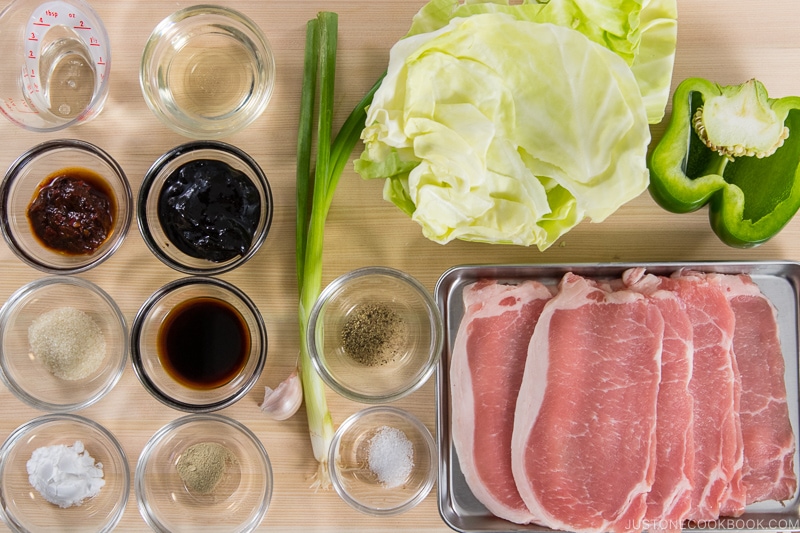
To Prepare the Ingredients
- In a small bowl, whisk together the ingredients for the sauce: 1 Tbsp doubanjiang (spicy chili bean paste), 2 Tbsp tienmienjiang (sweet bean paste), 2 Tbsp sake, 2 tsp soy sauce, and 1 tsp sugar. Set aside.
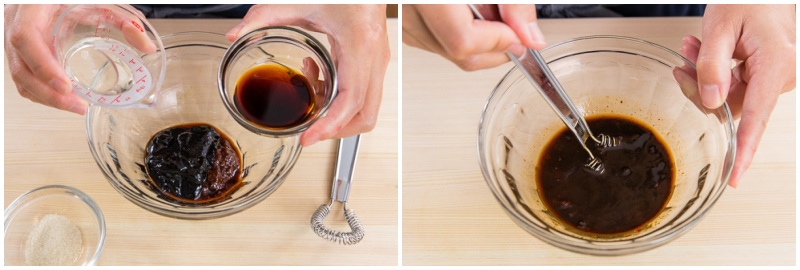
- Remove the seeds from ½ green bell pepper. Cut it into 1-inch (2.5-cm) pieces; I used the Japanese rangiri cutting technique. Cut 3 leaves green cabbage into bite-sized pieces about 1–1½ inches (2.5–3.8 cm).
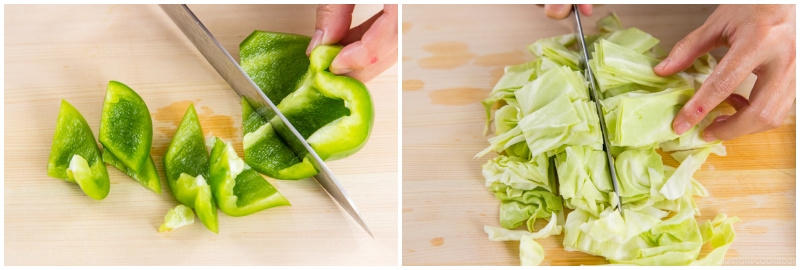
- Thinly cut 1 green onion/scallion diagonally and cut 1 clove garlic to thin slices.
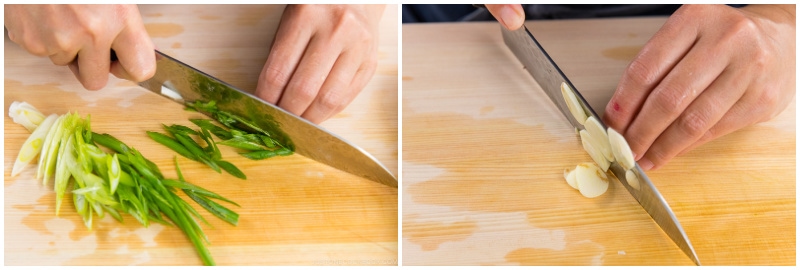
- Cut 10 oz thinly sliced pork loin into smaller pieces, roughly 2 x 2½ inches (5 x 6.3 cm). Season the pork with ¼ tsp Diamond Crystal kosher salt and ⅛ tsp freshly ground black pepper.
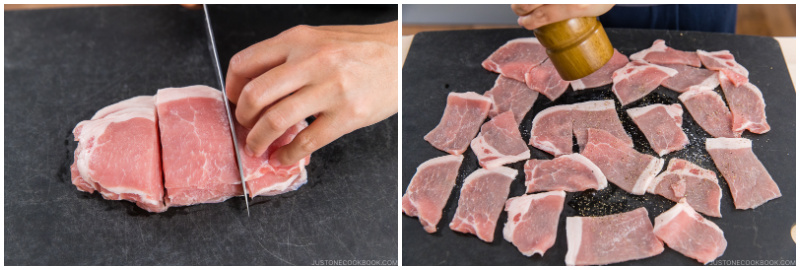
- Lightly coat the pork with 1 tsp potato starch or cornstarch.
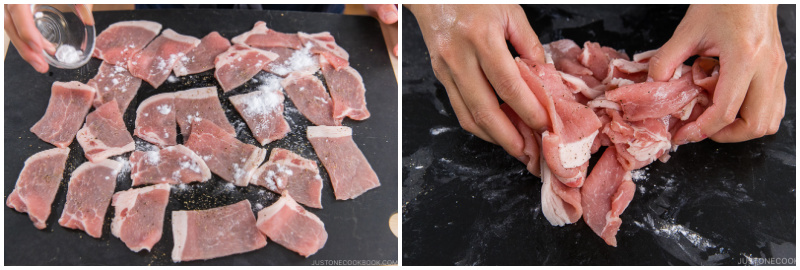
To Stir-Fry
- In a wok or a large frying pan, heat 1 Tbsp neutral oil over medium-high heat (or medium on a professional stove). Swirl the oil around the surface. When the oil is hot, add the green bell pepper and stir-fry for 3–4 minutes.
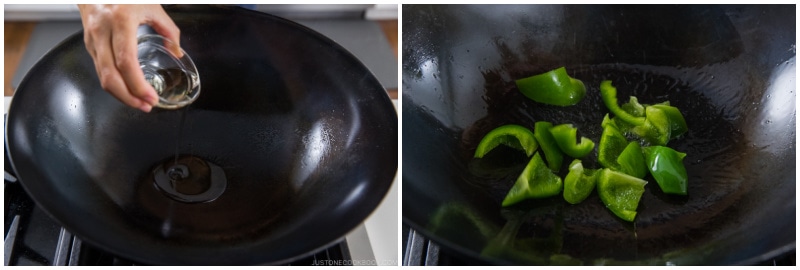
- Add the cabbage and stir-fry for 2–3 minutes. When the vegetables are tender but still crisp, turn off the heat and transfer them to a plate. Make sure the vegetables are fully cooked; you will only quickly reheat (and not cook) them later.
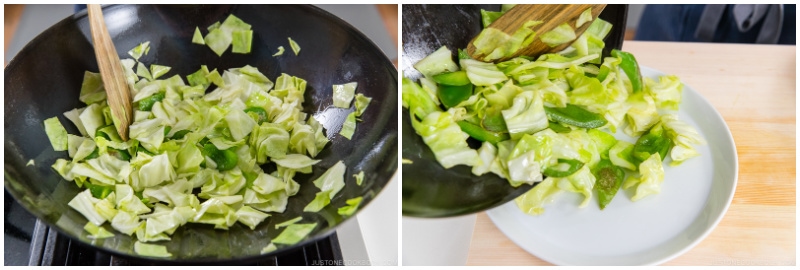
- Turn the heat back on over medium and add another 1 Tbsp neutral oil and coat the bottom of the wok/pan. When the oil is hot, add the pork.
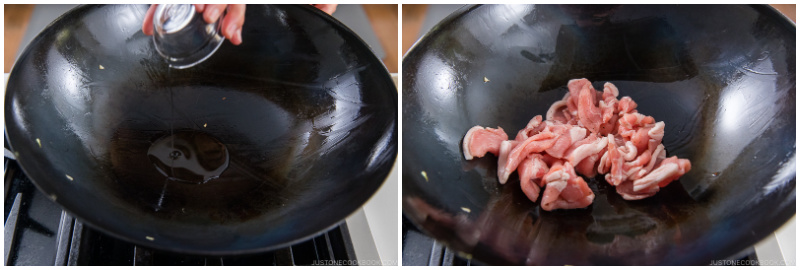
- Spread it out in a single layer and cook until the bottom side is brown, then flip. The meat will release itself when it is nicely charred.
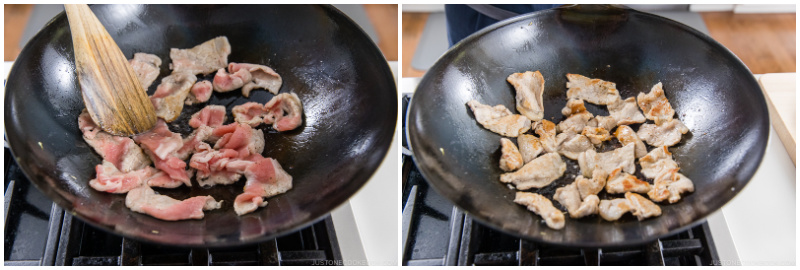
- When the pork is no longer pink, add the green onion and garlic. Stir for 30 seconds and add in the seasoning sauce.
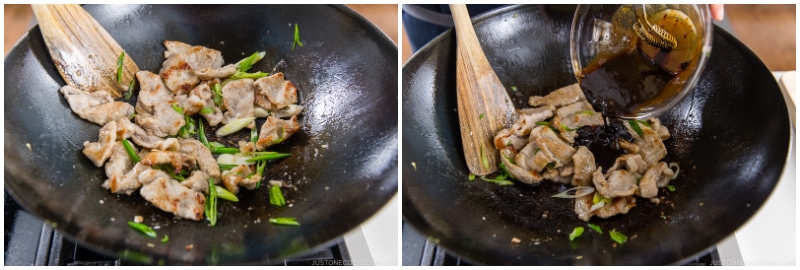
- Stir to coat the meat and add the vegetables back in the wok/pan to reheat.
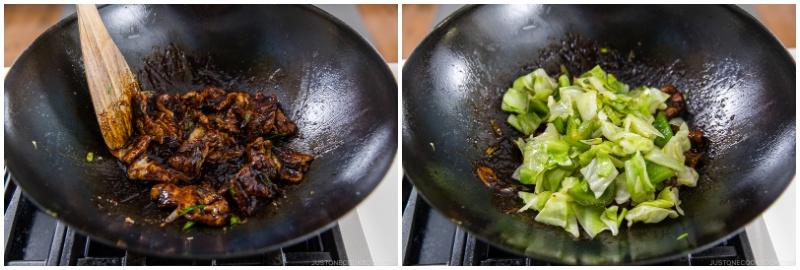
- Quickly toss everything together and season with ⅛ tsp white pepper powder. Transfer the Twice-Cooked Pork to a serving plate. Enjoy!
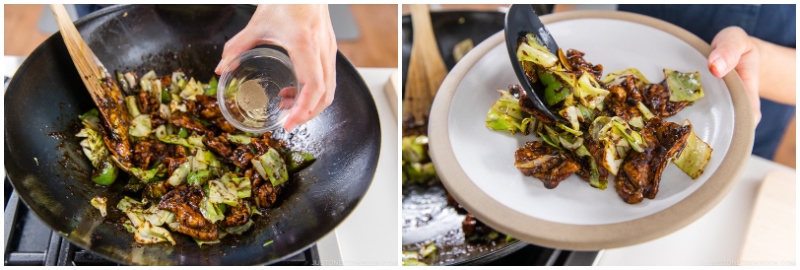
To Store
- You can store the leftovers in an airtight container in the refrigerator for up to 3 days and in the freezer for a month.
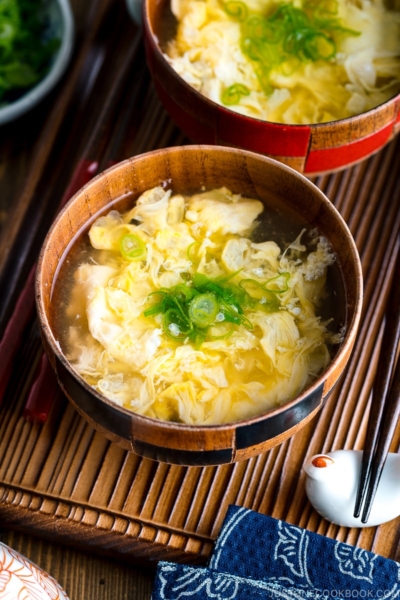

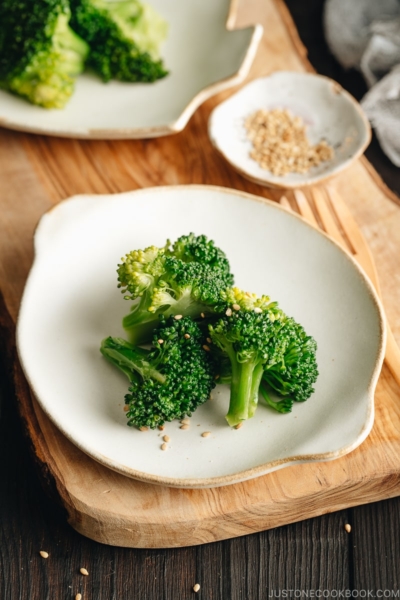
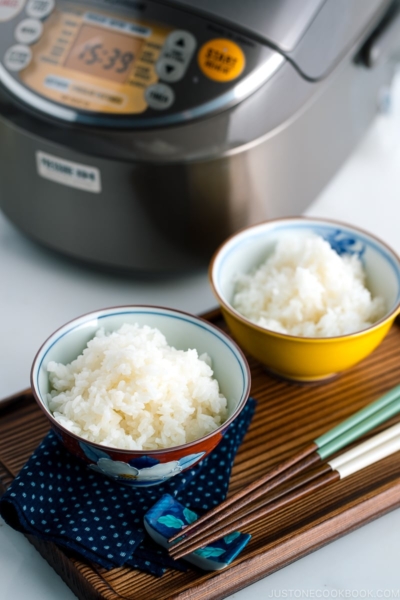
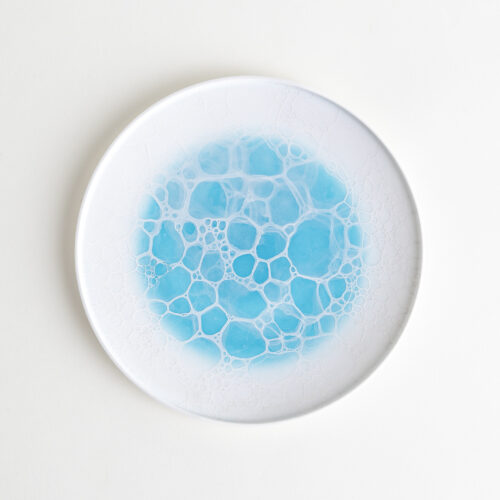
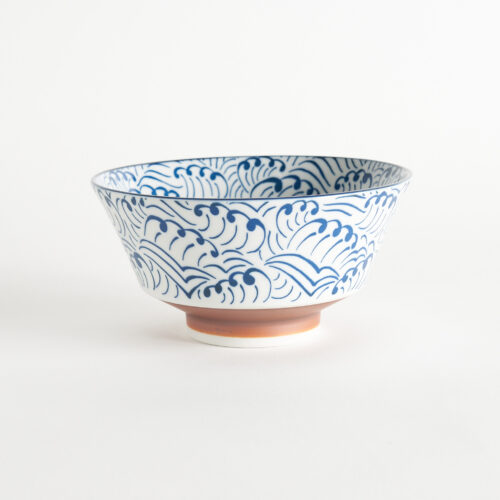
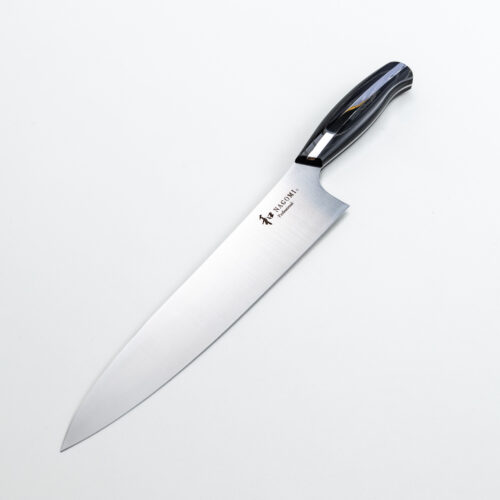

Did you season your wok? Amazon description states wok is preseasoned and you can use the wok after washing. I’m interested in this wok. Thank you.
Hi Karen! Thank you very much for reading Nami’s post!
Yes! Nami season her wok. Here is how to season a wok post:
https://www.justonecookbook.com/how-to-season-a-wok/
We hope you enjoy the wok. Happy Cooking!
This recipe is such a great weeknight meal – so quick and easy to make! Definitely adding it to our rotation!
Hi Lindsay! We are so happy to hear you enjoyed Nami’s recipe!
Thank you very much for your kind feedback.
Thank you for this recipe. Made it last night and loved it. My 12 year old isn’t a spice fan so I reduced the two Chinese sauces a little and he wolfed it down! I also really like the new design of the website. x2 etc is VERY useful!!! I think I’ve cooked 65% of the recipes on your site now 🙂
Hi David! Aww… we are so happy to hear your family enjoyed this dish and you had already cooked 65% of Nami’s recipes! That is awesome!
Thank you very much for your kind words and feedback about a new website. Nami read your comment, and she is happy!🥰
I made this dish with thin-sliced pork loin, cabbage, and peppers–which just happened to be almost the only ingredients I had left in my refrigerator. It was the perfect dish for what I had! Although I lived for 20 years in Japan, I never had this dish during that time, so I’m so pleased to learn about it. Thank you!
Hi A Ediger, We are glad to hear you enjoyed this dish the first time!😊
Thank you very much for trying this recipe and for your kind feedback.
I made the recipe last night with medium firm tofu and it was delicious. I did not have the sweet bean sauce so I followed your instructions for the substitution with white miso since I had no red. It came out to be a delicious concoction. I will try it with pork next.
Hi Conee, We are glad to hear you enjoyed this dish!
Thank you very much for trying this recipe and for your kind feedback!
Hi Naomi Can I use beef instead of pork?
And if so which cut of beef will work well?
Thank you for your beautiful recipes ❤️
Hi Sam, Yes, you can use beef. Our recommendation is thinly sliced Beef Chuck/Ribeye.
Thank you very much for trying Nami’s recipe! We hope you enjoy them soon.☺️